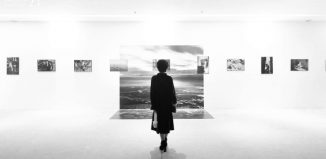When sound smells like… shrimp paste – Experiment with Siedl/Cao
Written with photos and videos by Nguyen Duc Tung for Hanoi Grapevine
Do not copy or re-post without permission from the author and Hanoi Grapevine.
On 27 Dec 2018, at Manzi Art Space (Hanoi), for the first time ever many people have had the chance to hear the sound of light, or to create, by themselves, a melody from tree leaves. The impressive performance is a combination of brilliant sense of sound and electrical physics knowledge by the artist duo Gregor Siedl (Austria) and Cao Thanh Lan (Vietnam).
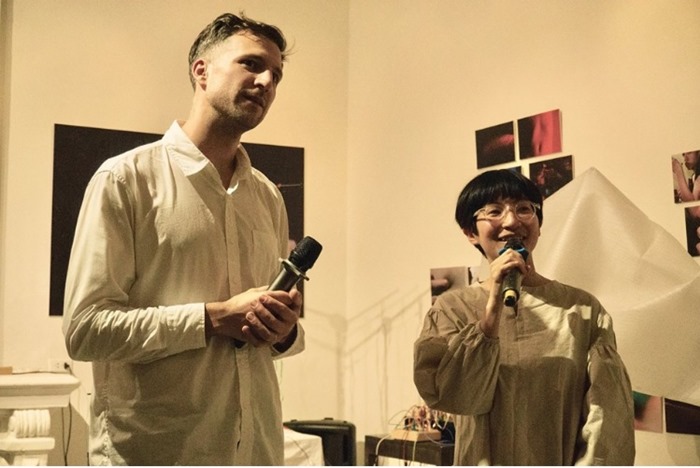
The opening performance ACGT was named after the first letters of the four bases that make up our DNA: Adenine, Cytosine, Guanine, Thymine. The first part consisted of these letters being read aloud in order, with different intensities and pitches, implying each individual in our society. The duo also blended inbetween their murmurs and wrote the appearing letters on paper.
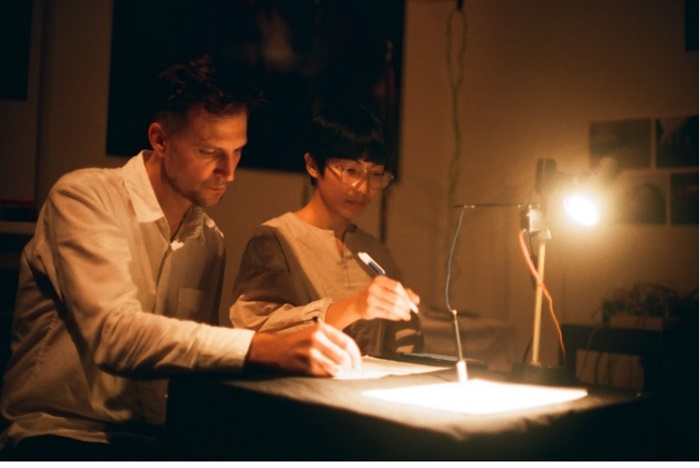
The second half of the work was performed by the audience members present at the show themselves. The two artists asked people questions and recorded the answers through the mic. The sound intensity of the human voice would then be analyzed and transformed into various voltages corresponding to the constantly-changing intensity in each person’s voice. The voltage level was sent to another module that moves it with the same amplitude as the intensity level of the voice (eg. louder voice means larger amplitude and vice versa). Finally, a motor was connected to a pen, ‘powered’ by that human voice to draw on the paper.
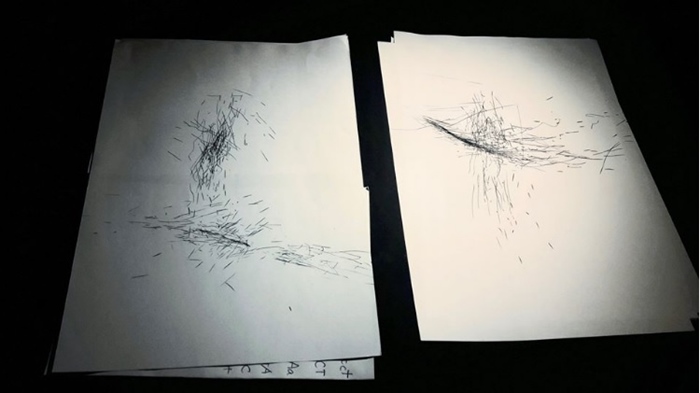
Applying the same method of transforming vibrations into voltages and thereby creating sounds, “The plant” made the audience excited because they could create melodies just by touching the tree leaves.
Video of Gregor guiding the audience to create sounds from tree leaves:
Not only sense of hearing, sight, touch, Gregor Siedl and Cao Thanh Lan stimulated the sense of smell of the audience through their work “Sonate mam tom” (Shrimp paste sonate).
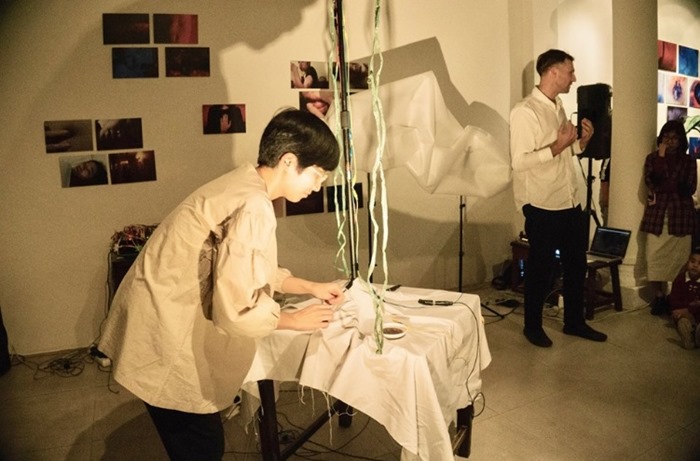
The performance consisted of two plates of shrimp paste placed on the table. The nylon strings are tied to two engines on an axis. When jump started, the two engines will make the string spin around on two plates of shrimp sauce, resembling the old small fans all the while spreading the smell of this special paste.
Not only so, the two engines also created sounds. Like any electrical device, the engine also has an electromagnetic field. The two artists built a receiver, operating on the principle of electric guitars, to obtain sound signals from changes in the electromagnetic field in and around the engine. These signals were enhanced by a “resonator”, thus creating a harmonious and complex structure from the sound of the engine.

Seemingly impossible, Gregor Siedl and Cao Thanh Lan also created sounds from light. In “Harmony of pollution”, two artists set up six bottles containing water from six different lakes in Hanoi and put a light bulb behind each. Because the water had different turbidity levels, so the amount of light passing through was also different. The two artists then used a sensor, recording the light levels and converting them into electric signals. These signals were eventually “translated” to the corresponding sounds.
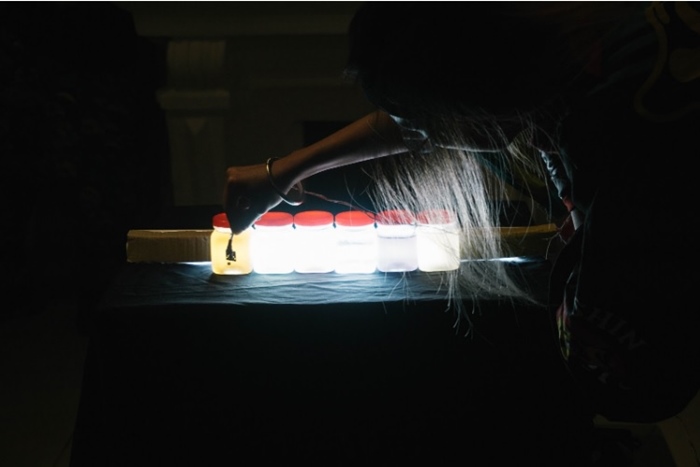
Gregor Siedl and Cao Thanh Lan gave audiences a new perspective on how to utilize sounds and create sound installation works. After some time of playing classical and jazz music, they had an inner need to break the rules and do more improvisation. Apart from that was the desire to have sounds being experimented with physically, meaning we could see it, as similar to when we play an ordinary instrument.
As for the technical aspect, the duo happened to know from a friend about a linked device that could connect the sound and motions of DC devices such as motors, sensors and switches. Everything is converted into control voltage (CV for short). At the same time, artist Cao Thanh Lan was beginning to experiment with modular synthesizer, a combination of modules also works on the principle of CV. From that point, the duo had an idea to combine and expand the experience of sound through physical experiences. Gregor and Lan also admire Japanese sound artists for their excellent skills in electricity and mechanics. Their arrangements usually involves kinetics, using circuits designed to each individual’s needs.
Translated by Hanoi Grapevine


